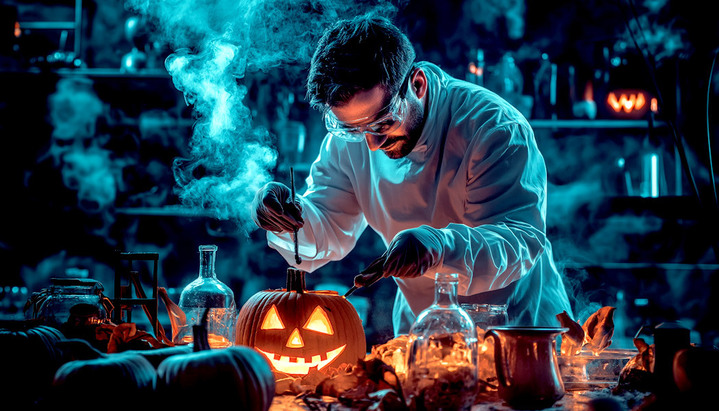
Halloween is a fun time for dressing up and pretending to be scary creatures like vampires, monsters, zombies and ghosts. These spooky legends have been popular for hundreds of years, but how much scientific truth is there to the stories? In our virtual science lab, we will use experiments and logic to find out!
Examining the Legend of Dracula and Vampires
The legend of Count Dracula has frightened people since the 1800s. Dracula was said to be a vampire - a monster that comes out at night to suck people's blood through fangs in order to live forever.
Let's test some of the vampire myths with science:
By the end, we'll have some scientific answers on what's fact or fiction about Dracula and vampires!
Analyzing the Science Behind Frankenstein's Monster
The famous Dr. Frankenstein was a scientist who built a monster out of body parts and tried to bring it to life. Could we really make a monster in a lab? Let's break this scary story down scientifically:
While we can't actually make monsters, we can better understand the science behind the legend of Frankenstein!
Studying the Biology Behind Zombies
Zombies are popular in scary movies and books about the undead rising from their graves to attack the living. Is there any science behind zombies? We'll investigate:
While bringing back the dead seems impossible, through our lab we'll uncover real science about body preservation, infections, and aggressive behaviors related to zombie stories.
Searching for Scientific Explanations Behind Ghosts
Ghosts are believed by many to be spirits of dead people that haunt the living. What might explain ghost sightings scientifically? Our lab will search for answers:
We may not find real ghosts in our lab, but we can test the real-world science behind what might make people think they saw or felt a ghost!
Using Science to Test Scary Halloween Legends
Halloween legends about vampires, monsters, zombies and ghosts have been thrilling people for generations. While the virtual lab experiments won't make these scary creatures come to life, by testing common myths scientifically we can separate Halloween fact from fiction!
What we discover is that the real world has some creepy things that parallel spooky stories:
So, while we may not find evidence of real vampires, Frankenstein monsters, the undead or ghosts in our lab, focusing the scientific method on Halloween legends leads us to learn about some real frightening phenomena in science!
The virtual lab also shows how legends and myths often originate from realworld elements that humans then exaggerate or embellish over the years. Finding the core facts behind the fiction can help debunk supernatural and scary stories.
Tips for Continuing Your Scientific Halloween Investigations
Hopefully our virtual lab gave some scientific insights into creepy Halloween tales of vampires, monsters, zombies and ghosts. Here are suggestions for further scientific explorations into scary legends and phenomena:
Explore optical illusions and how the eye and brain can play tricks to see things differently from reality.
Research neuroscience discoveries about brain function, hallucinations, and sleep.
The world offers so much real science that's creepy and fascinating! After debunking Halloween legends through experiments, take the chance to dig deeper into the startling truths found in biology, chemistry, physics, psychology and other sciences.
Let the virtual lab spark your curiosity into the surprising and sometimes spooky things found in both nature and the human mind when illuminated by the light of science